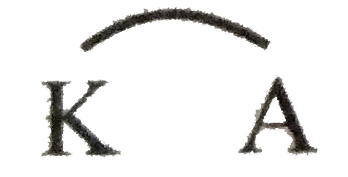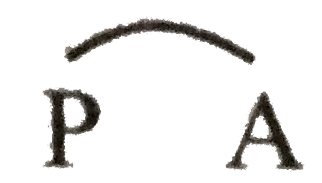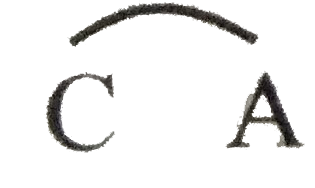Which of the following symbols denotes presence of tepals and epitepalous stamens in a flower ?
a)
b)
c) 
d)
The correct Answer is:B
To determine which symbol denotes the presence of tepals and epipetalous stamens in a flower, we can follow these steps:
1. Understand the Terms:
- Tepals: Tepals occur when the sepals and petals are not distinguishable from each other. This means that they are fused together, forming a single structure. The term used to represent tepals is P, which stands for perianth.
- Epipetalous Stamens: This refers to the condition where the stamens (the male reproductive parts of the flower) are fused to the tepals. This condition is represented by placing a bar over the symbols for petals and stamens.
2. Identify the Symbols:
- The symbol for tepals is P.
- The symbol for stamens is A.
- The fusion of tepals and stamens is represented by a bar over both symbols (P and A).
3. Analyze the Options:
- Option A: K and A - K represents calyx, which is incorrect.
- Option B: P and A with a bar over them - This correctly represents tepals and epipetalous stamens, making it a potential correct answer.
- Option C: C and a bar over A - C represents corolla, which is incorrect.
- Option D: G - G represents gynoecium, which is also incorrect.
4. Conclusion:
- The correct option that denotes the presence of tepals and epipetalous stamens is Option B, which shows P (tepals) and A (stamens) with a bar indicating their fusion.
- Tepals: Tepals occur when the sepals and petals are not distinguishable from each other. This means that they are fused together, forming a single structure. The term used to represent tepals is P, which stands for perianth.
- Epipetalous Stamens: This refers to the condition where the stamens (the male reproductive parts of the flower) are fused to the tepals. This condition is represented by placing a bar over the symbols for petals and stamens.
- The symbol for tepals is P.
- The symbol for stamens is A.
- The fusion of tepals and stamens is represented by a bar over both symbols (P and A).
- Option A: K and A - K represents calyx, which is incorrect.
- Option B: P and A with a bar over them - This correctly represents tepals and epipetalous stamens, making it a potential correct answer.
- Option C: C and a bar over A - C represents corolla, which is incorrect.
- Option D: G - G represents gynoecium, which is also incorrect.
- The correct option that denotes the presence of tepals and epipetalous stamens is Option B, which shows P (tepals) and A (stamens) with a bar indicating their fusion.
Topper's Solved these Questions
- MORPHOLOGY OF FLOWERING PLANTSBOOK - NCERT FINGERTPS ENGLISHCHAPTER - MORPHOLOGY OF FLOWERING PLANTSEXERCISE - Morphology Of Flowering Plants
135 Videos
- MINERAL NUTRITIONBOOK - NCERT FINGERTPS ENGLISHCHAPTER - MINERAL NUTRITIONEXERCISE - Mineral Nutrition
130 Videos
- NEURAL CONTROL AND COORDINATIONBOOK - NCERT FINGERTPS ENGLISHCHAPTER - NEURAL CONTROL AND COORDINATIONEXERCISE - All Questions
144 Videos
Similar Questions
Which of the following is asymmetrical flower
View SolutionWhich of the following symbols represents the atomic number of an element?
View SolutionWhich of the given symborl represents epitepalous condition?
View SolutionWhich of the following is an accessory organ of flower?
View SolutionThe presence of exserted stamens is a character of
View SolutionWhich of the following symbol is used for five unaffected offspring ?
View SolutionWhich of the following statement for flower is wrong?
View SolutionWhich of the following is not related with flowering plants ?
View SolutionWhich of the following plants produces seeds but not flowers : -
View SolutionWhich of the following plant has epigynous flower?
View Solution
